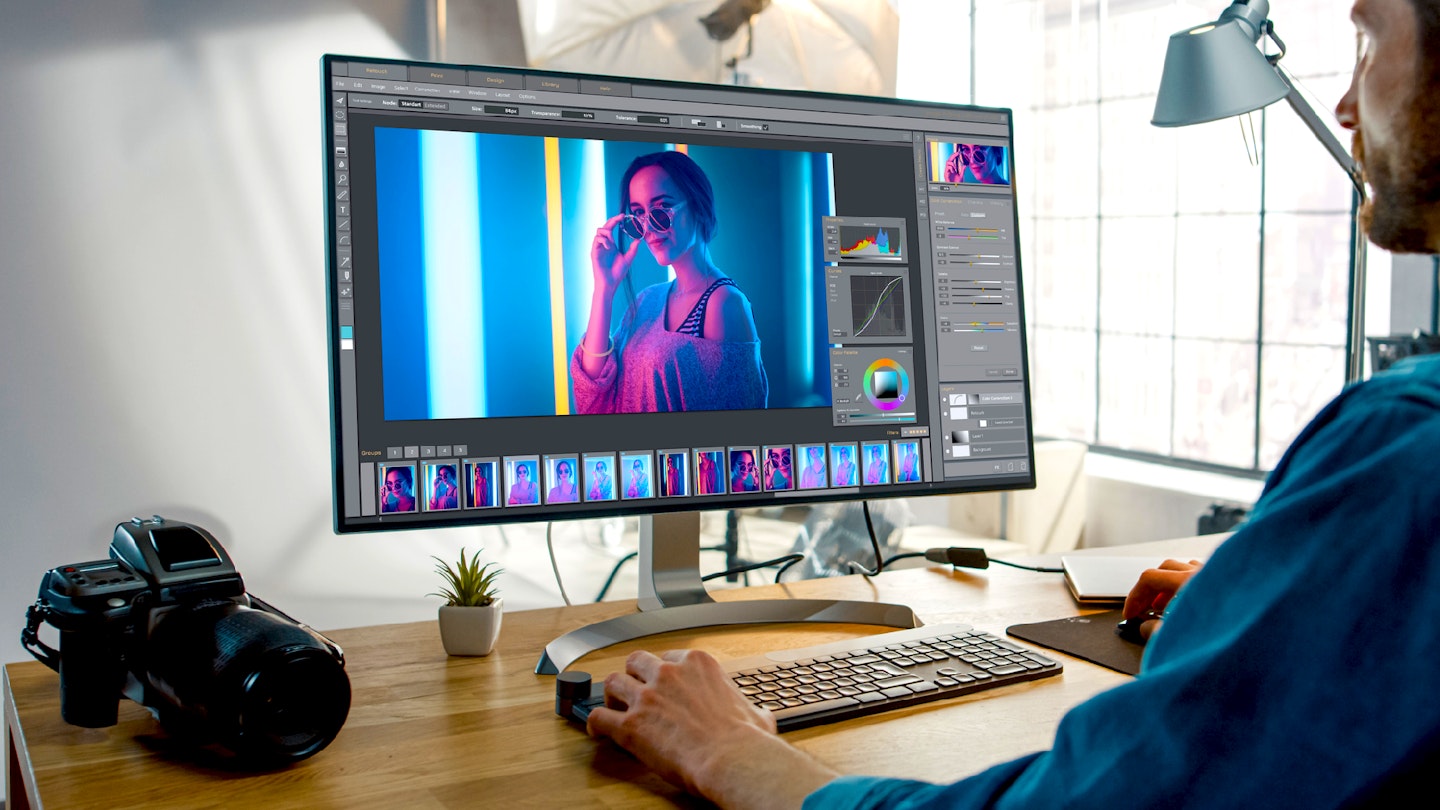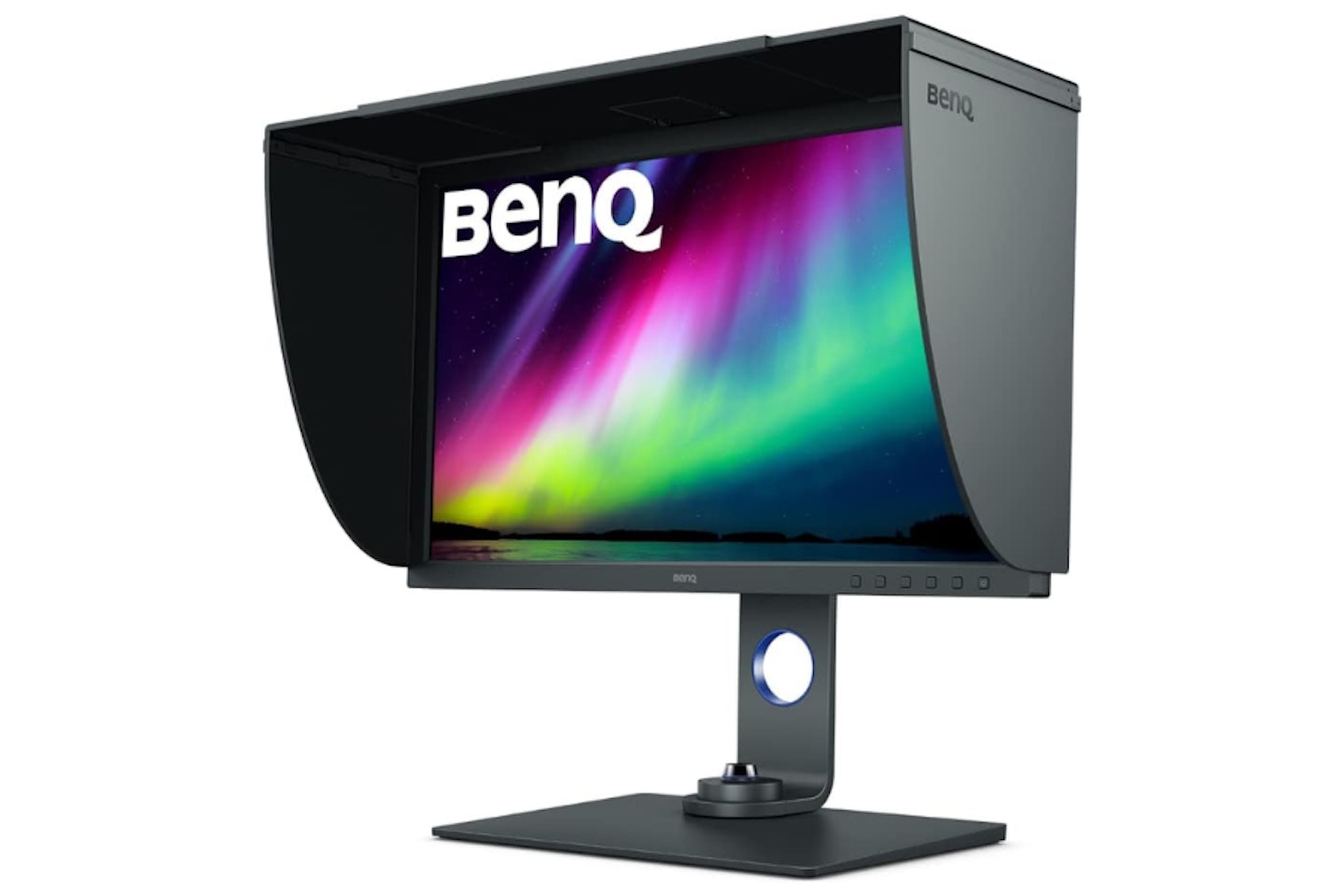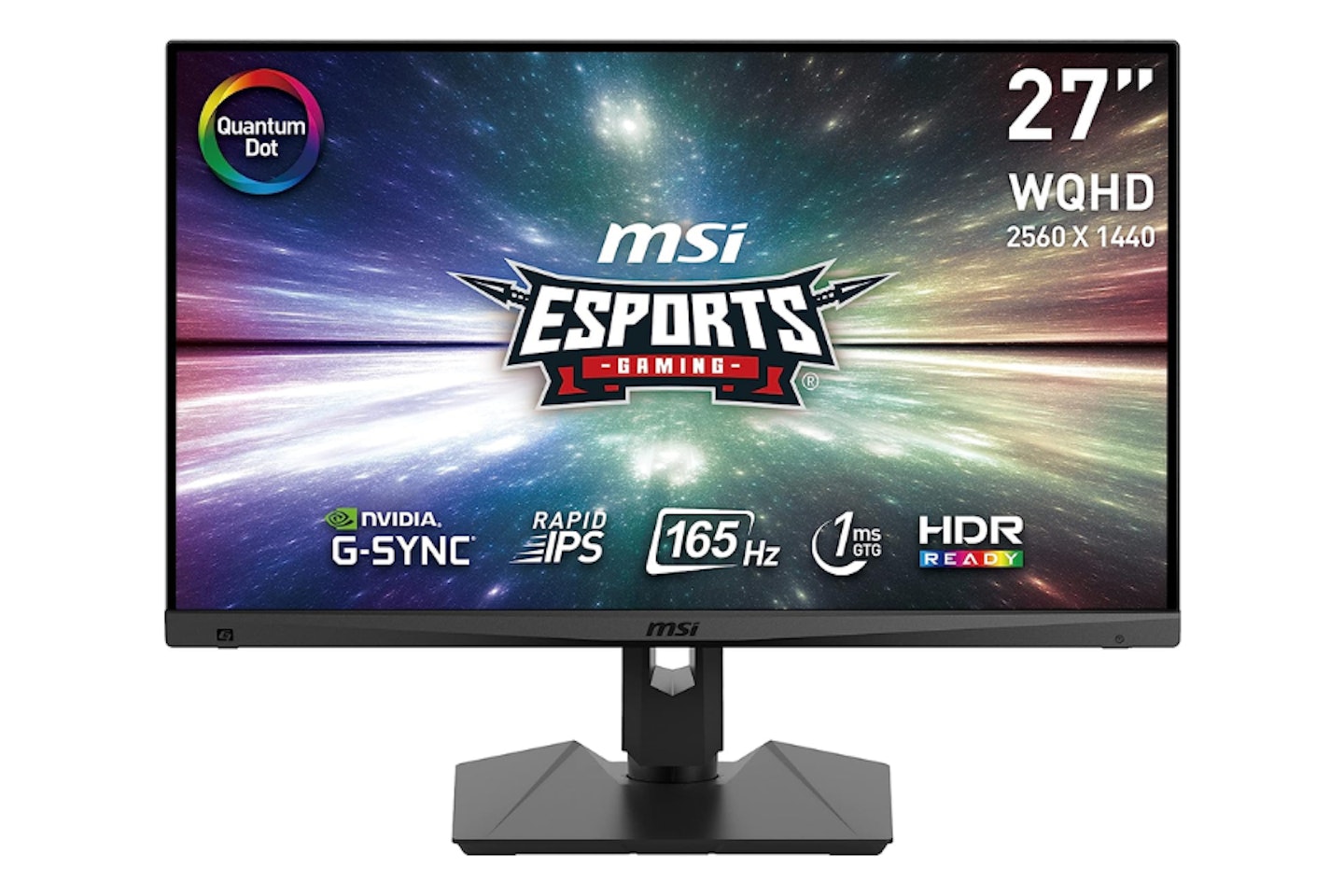Professional image editing is now within everyone's reach thanks to some of the best monitors for photo editing that we've ever clapped eyes on. The days of being stuck with a sub-standard or lacklustre photograph are long gone, thanks to the digital age. Indeed, some of the best monitors ever to grace our desktops can do much more than an entire darkroom of old.
Any seasoned snapper will tell you, digitally adjusting your shots has become part of the modern photographer's toolkit. Your gaming rig or office PC might have a massive 4K screen - but that doesn't mean it's right for photography. Only the best monitors for photo editing can do that. So, you've probably already invested in the best camera you can find, plus some lenses and accessories. Next comes your professional image editing software, such as Adobe Lightroom. Being able to use a digital airbrush to clean up or repair unwanted details is powerful enough, but adding grain, contrast and more to your shots can elevate them to a totally new level.
The best monitors for photo editing in 2023 at a glance
• Best overall monitor for photo editing: ASUS ProArt Display PA328QV Professional Monitor - View at Amazon
• Best budget monitor for photo editing: ViewSonic VP2768a 27-inch 2K Professional Monitor - View at Amazon
• Best mid-budget 4K monitor for photo editing: BenQ PD3220U Designer Monitor - View at Amazon
• Best professional monitor for photo editing: BenQ SW271C Photographer Monitor- View at Amazon
However, if you're doing that on an old budget monitor your results will follow suit. If there's one thing you'll need, especially if you want to print out your finished shots, its accuracy. Sometimes, a bad monitor may create issues that aren't even there. What you see on paper should accurately represent what you see on screen, and vice versa - only the best monitors for photo editing can give you that.
So, time to look for a better screen. There are a lot of options out there that support different standards when it comes to colour, with even some that support the Adobe RGB colour space that many photographers and designers prefer. We've grouped our recommendations into handy categories to help you narrow things down, including some 4K resolution monitors. Plus there's a buyer's guide at the end of the article. Now, let's venture out and take a high-res look at the best monitors for photo editing to be found.
Best monitors for photo editing in 2023
Best overall monitor for photo editing
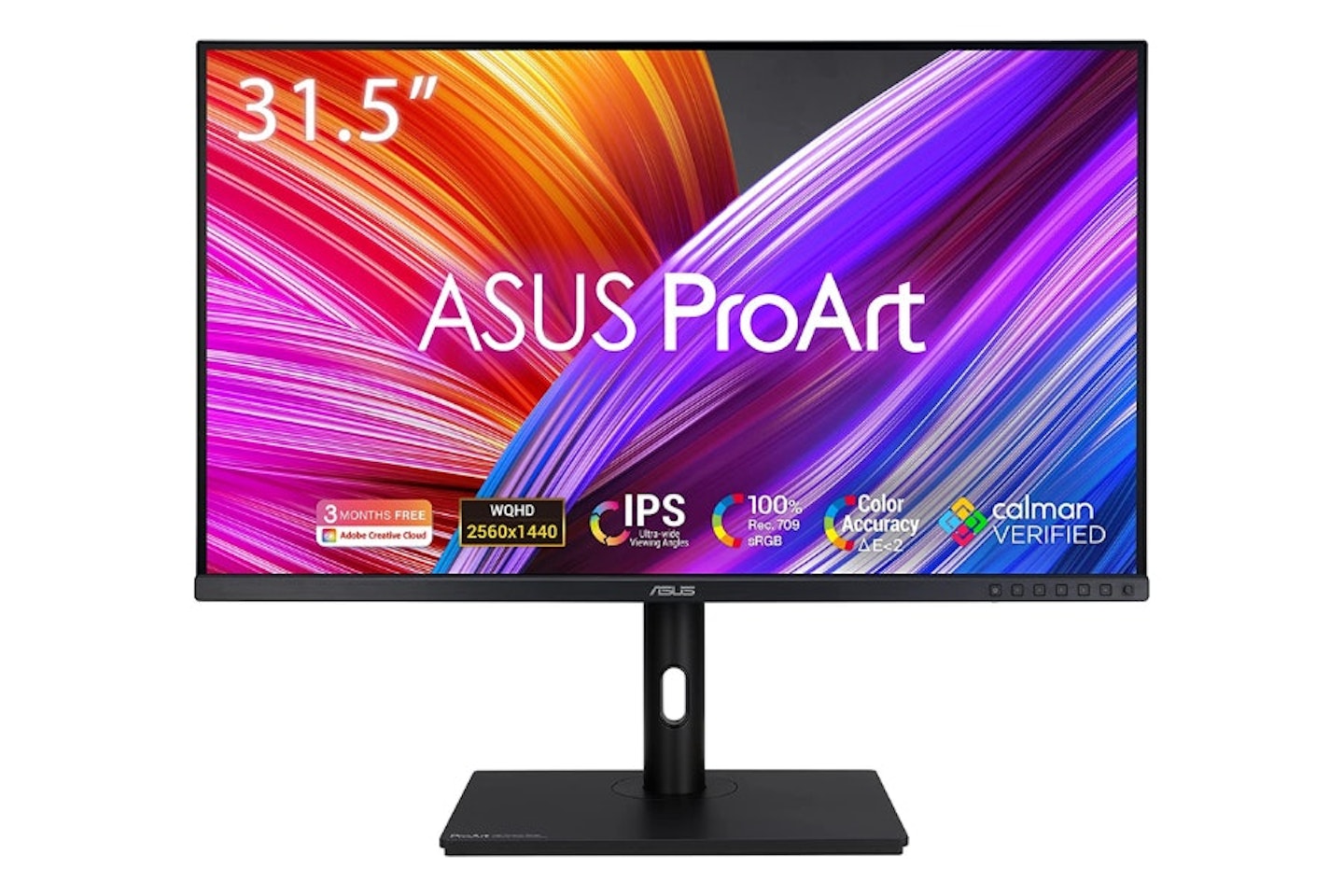
Designers and creative workers instead need a large, reliable monitor that'll be easy on the eyes with above-par colour accuracy. If that's you, you won't go wrong with this 32" ASUS ProArt Display PA328QV. Calman validated for excellent Delta E < 2 colour accuracy, the PA328QV is a fine example of how a larger screen can be fully utilised by photographers to bring out the best in their work. Calman is a popular suite of software designed to accurately measure the accuracy of a screen's colours, but 100% sRGB and Rec. 709 are present on this ASUS too of course, although those wanting Adobe RGB will have to calibrate for the others.
This screen also has a huge array of ports and Ultra-low Blue Light technology to protect your eyes. Working on your designs and photos is going to be a joy on this beautiful large display.
Pros
- Excellent screen real-estate
- IPS panel
- WQHD resolution
- Calman, RGB and Rec.709 for excellent colour accuracy
- Superb colour accuracy
- Eye care features
- Wide viewing angle
Cons
- Adobe RGB support would be a bonus
- Some find the USB port position tricky
| Screen: | 31.5-inch, IPS |
| Resolution: | WQHD (2560 x 1440) |
| Refresh rate: | 75hz |
| Speakers: | Yes, 2x 4w |
| Connectivity: | DisplayPort, HDMI and earphone jack, plus USB hub |
| Weight: | H595.6mm x W714.8 mm x D245mm (with stand) |
| Dimensions: | 11.5 kg (with stand) |
| Extra features: | 178-degree viewing angle, Calman Verified, Blue Light Filter, Anti-Glare Coating, 100% sRGB and 100% Rec. 709 wide color gamut, Delta E < 2 color accuracy, HDR10 |
- Customer review: "Impeccable colour calibration, good ergonomics. There are even speakers, but they're only fine for someone who doesn't need to listen to music. I already had independent speakers screen so I use them. I recommend this product."
Best budget monitor for photo editing
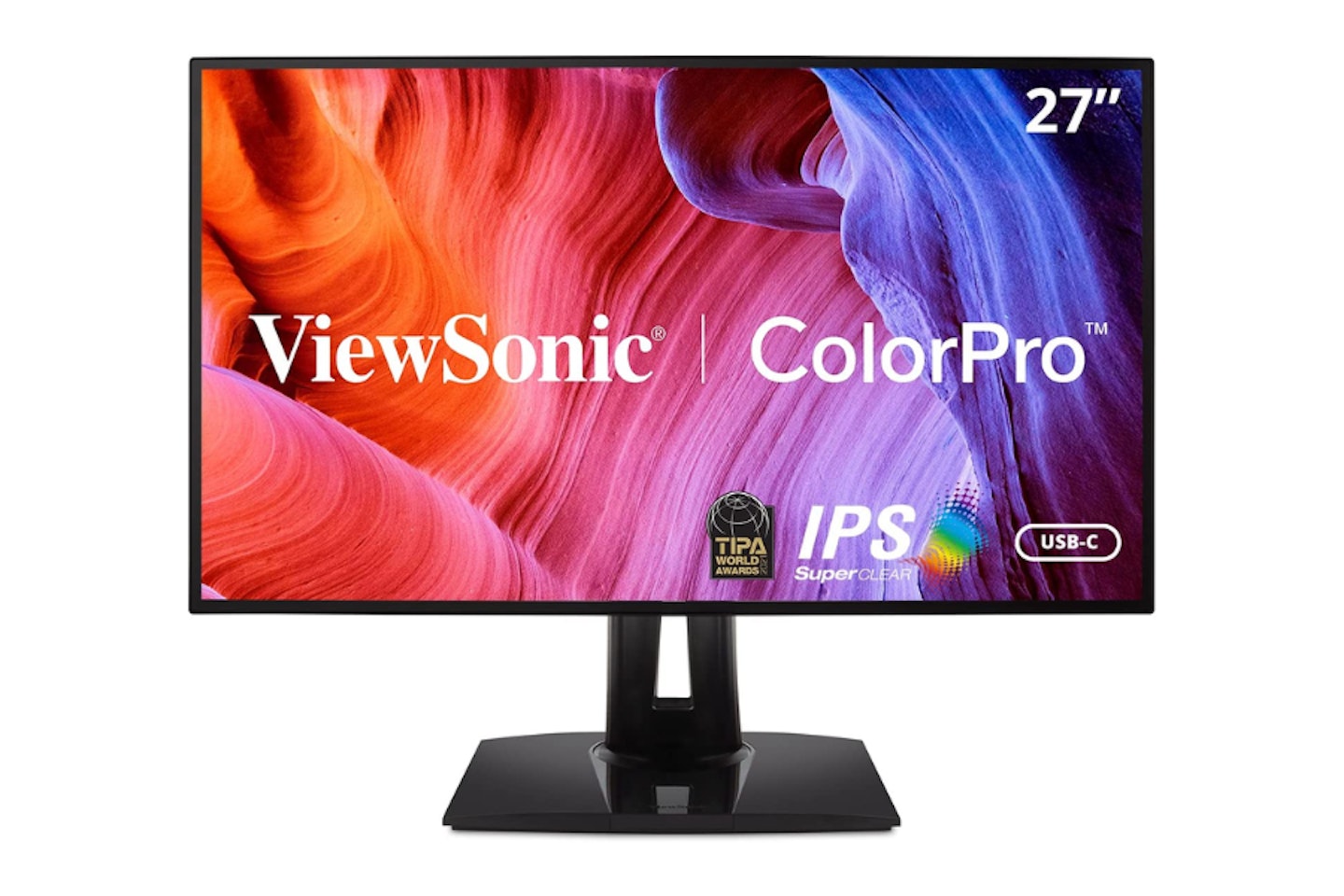
For many, a 27-inch monitor screen strikes the right balance between being large enough for photography editing, and small enough to fit onto the average desk. This VP2768a does just that, and it's squarely aimed at anyone who cares about colour accuracy. At this price point, it's nothing short of amazing that a monitor with an IPS panel comes with Pantone Validation, 100% RGB and Rec.709 wide colour gamut; all of the professional features you need for accurate screen-to-print reproduction and video if you also turn your hand to that.
If that wasn't enough, Viewsonic's Colorbration software works alongside your graphics card to ensure even greater accuracy. It also offers an exceptionally wide viewing angle of 178 degrees - handy if you're working with more than one monitor or are collaborating with someone else. The stand is also flexible, with a full range of adjustments for comfort - again, ideal for long editing sessions.
Pros
- Ideal size for most users
- IPS panel
- QHD resolution
- Pantone, RGB and Rec.709 for excellent colour accuracy
- Very adjustable stand
- Wide viewing angle
Cons
- Not 4K (but QHD is fine for a 27" screen)
| Screen: | 27", IPS |
| Resolution: | QHD (2560x1440p) |
| Refresh rate: | 60hz |
| Speakers: | No |
| Connectivity: | HDMI, DisplayPort, and USB Type-C |
| Weight: | 6.88 kg |
| Dimensions: | 21.59 x 61.21 x 40.89 cm |
| Extra features: | 100% sRGB and Rec.709 wide colour gamut, Pantone Validated, Blue Light Filter, Anti-Glare Coating, Frameless, Flicker-Free, swivel, pivot, tilt, and height adjustments, ViewSonic Colorbration+ |
- Customer review: "As a hobbyist photographer, I decided it was time to upgrade my ageing monitor, and after a lot of research I settled on the ViewSonic VP2768, and I've not been disappointed. The colours are fantastic - and it's definitely helped me getting colour-accurate prints, being 100% sRGB - and the clarity is great, and at 27in it's plenty big enough."
Best mid-budget 4K monitor for photo editing

This BenQ PD3220U isn't just a gorgeous-looking display, it's also daisy-chainable via USB-C. That means you only need to connect one screen to your computer to actually benefit from two of these if you want the ultimate multi-monitor setup.
But that's not the most impressive feature here for photographers looking for the best, this monitor covers 95% P3 and 100% sRGB and Rec.709 with Delta E ≤ 3. There's even Pantone Validated & Calman Verified colour accuracy. As colour features go, not to mention the BenQ calibration and Display Pilot software that provides various modes for creatives, this is a real stunner.
Pros
- Daisy-chainable
- A huge number of colour-accuracy and calibration features
- Low blue light and flicker-free
- KVM built-in
- Hotkey puck G2 for easy access to features
- BenQ ICCsync for quickly matching the second attached monitor
Cons
- No Adobe RGB support
- Speakers not the best
| Screen: | 31.5", IPS |
| Resolution: | 4K, 3840 x 2160 |
| Refresh rate: | 60Hz |
| Speakers: | Yes |
| Connectivity: | Thunderbolt 3, USB-C, 2 HDMI ports, 1 DisplayPort, and 4-port USB, built-in KVM switch |
| Weight: | 10.4kg |
| Dimensions: | 3.4D x 28.1W x 16.2H (inches) |
| Extra features: | 100 Percent sRGB and 96 Percent P3 colour space with IPS Technology, Thunderbolt 3 daisy chain technology for dual monitor, HDR10 content support, Flicker-free Technology, Low blue light, KVM switch |
- Customer review: "I am a full-time photographer. The colours set at the factory were already good so if you don't have a monitor calibrator, you can get away with working straight out of the box. It really is that good. This monitor is perfect for me because it provides accurate colour, doesn't change any colours or tones over time, doesn't get too hot, doesn't have any dead pixels and doesn't have any light bleed. It does everything it's supposed to do - perfectly and with consistency."
Best professional monitor for photo editing
One of the many tricks up the sleeve of this BenQ Photographer Monitor is the inclusion of its AQCOLOR Technology - which means the factory calibration is good to go right out of the box. Calman and Pantone Validation add to the colour accuracy mix, alongside 100% sRGB and Rec. 709 - much like others on our list. But here we also have the sought-after 99% Adobe RGB for extreme accuracy with Lightroom and the like.
But this monitor takes it one step further with Paper Colour Sync technology. Photographers can input their chosen paper and the software will produce previews that are frighteningly close to the final print. The addition of a shading hood really puts this monitor into the professional category in terms of design, allowing you to avoid glare and reflections. A really powerful tool for any serious photographer.
Pros
- Adobe RGB support
- sRGB and Rec. 709
- Paper Colour Sync
- Calman and Pantone Validated
- Shading hood
- Wide viewing angles
- Hardware calibration
Cons
- Slightly awkward USB port placement
| Screen: | 27", IPS |
| Resolution: | 4K, 3840 x 2160 |
| Refresh rate: | 60Hz |
| Speakers: | Yes |
| Connectivity: | HDMI, DisplayPort, USB, USB-C |
| Weight: | 10.9kg |
| Dimensions: | 14.3D x 26W x 24.8H cm |
| Extra features: | AdobeRGB / P3 Wide Color, HDR, Hardware Calibration, Compatible for MacBook Pro M1/M2, HDR10, BenQ AQCOLOR Technology, Paletter Master Element Software for Hardware calibration, Paper Colour Sync |
- Customer review: "I'm using two of these for work and for home use - and have never owned better monitors! Very easy to use, set up and adjust. I work as a visual effects artist, so if you do the same - or are an editor or graphic designer and you don't want to break the bank, then I heartily recommend this monitor!"
Best monitor for photo editing and gaming
Yes, the MSI Optix MAG274QRF-QD is officially a gaming monitor, but it does have some key features that also make this an excellent choice for editing your photos. It actually has something of a dream spec with 99% Adobe RGB, HDR and an IPS panel that uses Quantum Dot technology for great contrast and colour levels. The WQHD resolution is equally good for gaming and photography uses, with a design that will fit just as well in a studio as a game room.
Extra perks for gamers are a 1ms response time, a blistering 165hz refresh rate and G-Sync for sharp tear-free motion. But, getting back to the photography - the addition of 147% sRGB, 97% DCI-P3, and HDR Ready dynamic contrast make this a fantastic all-rounder.
Pros
- 99% Adobe RGB support
- Very high refresh rate and syncing for games
- 1ms response time
- Wide viewing angle
- HDR
- sRGB and P3
Cons
- Slightly dated design
- No speakers
| Screen: | 27", IPS Quantum Dot |
| Resolution: | WQHD, 2560 x 1440 pixels |
| Refresh rate: | 165hz |
| Speakers: | No |
| Connectivity: | USB Type C, DisplayPort, HDMI |
| Weight: | 6.05kg |
| Dimensions: | 8.14 x 24.21 x 20.97 cm |
| Extra features: | HDR, G-SYNC Compatible, MSI Mystic Light, sRGB 147%, DCI-P3 97% |
- Customer review: "This monitor gives you the sharpness of 1440p while still giving you a high refresh rate, at a very reasonable price. On top of that, you also get excellent colour accuracy (especially after proper calibration) which makes it perfect for use as a gaming/content creation monitor. I use it for photo editing in Lightroom/Photoshop and its coverage of Adobe RGB is amazing. Highly recommend this monitor"
Best Adobe RGB monitor for photo editing

If you're all about Adobe colour accuracy, this ASUS ProArt is as close to perfection as you can get. Not only is this a stunning 32" screen, but it's an IPS panel with more colour accreditations than you'll ever need. You've got 100% Adobe and sRGB, Rec. 709 and more. ASUS are experts when it comes to out-of-the-box colour calibration, and this PA329C doesn't disappoint; It's ready to go for all of your photo editing needs.
And let's not forget that it is a 4K monitor too, so it's excellent for both high-res photographers and future-proofing. The design is particularly no-nonsense and professional, so it's an ideal match for those photographers looking to keep their desktops simple yet refined.
Pros
- 100% Adobe RGB support
- Loads of colour calibration tech
- 32" 4K screen is a perfect combo
- Modern professional aestetic
Cons
- As usual, don't expect too much from the speakers
| Screen: | 32", IPS |
| Resolution: | 4K (3840 x 2160) |
| Refresh rate: | 76hz |
| Speakers: | Yes |
| Connectivity: | HDMI |
| Weight: | 1.94 kg |
| Dimensions: | 24 x 73.5 x 61.5 cm |
| Extra features: | 98% DCI-P3, 100% Adobe RGB, 100% sRGB, 84% Rec.2020, 100 Percent rec. 709, HDR600, ASUS ProArt calibration technology |
- Customer review: "Everything you'd expect from the ProArt range, the blacks are lovely, the colour accuracy is amazing for the price and the delay is very small. It's a great tool for video editing."
Best monitor for photo editing in 2023: Buyer's guide
What resolution do you need?
A UHD (Ultra High Definition or 4K) monitor produces a sharper image than a standard HD version but will also cost more to buy. Standard HD is still an acceptable option for non-professional use but is becoming increasingly outdated as UHD becomes the industry standard. It may be worth splurging a bit more for a UHD monitor to future-proof yourself.
What colour gamut are you using?
What does this jargon even mean? Well, it's basically how you see the colours in a digital image. There are two that most cameras use, sRGB and Adobe RGB. The closer a monitor can get to 100%, the more accurate your monitor will be for showing images. Most photographers recommend shooting in sRGB for web use and Adobe RGB for print but the choice is yours. Aim for a higher percentage for the gamut you think is more suited to you. 100% is the ideal figure and will give the most realistic colour display.
What is Eye Care?
Eye Care is a feature included with some monitors that adjusts the blue light emitted by the monitor. This promotes alertness, and improved cognitive function, and reduces the negative effects of blue light - such as unbalanced circadian rhythm and eyestrain. Therefore, Eye-Care is a serious benefit to anyone who spends prolonged periods of time working on computers.
What else will you use the monitor for?
If this monitor will be your main monitor and will be used for regular computing, there are other things to remember aside from photo editing. If you're an avid streamer, for example, then a 4K resolution will look sharper than a standard HD monitor. If you're planning on editing your photos using a laptop out in the field, but need a bit more room, a portable monitor might be your thing.
Likewise, a gamer will benefit from HDR (High Dynamic Range) which improves how graphics look in games. Some gamers also prefer ultrawide monitors for immersion - they can also be great for photo editing, but most tend to lack any professional colour gamut standards.
So, a final consideration is whether the monitor has built-in speakers. If you're wanting to listen to music, enjoy a video game or simply watch videos on Twitter, external speakers could be an additional cost you didn't want to fork out for.
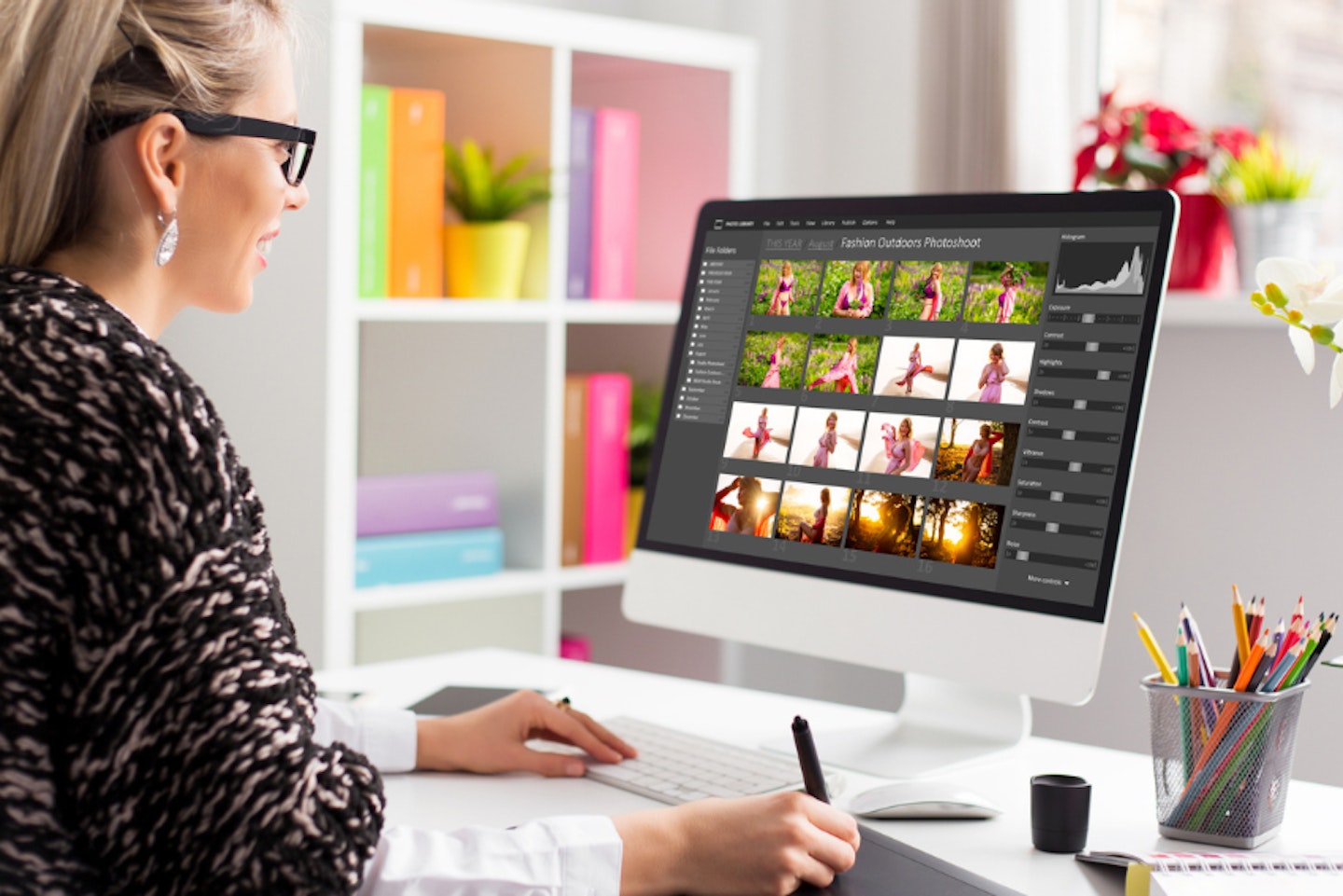
Monitor jargon explained
Resolution guide
Given that digital photography is all about ever-higher resolutions and pixel counts, we'd always recommend the highest possible resolution screen that you can afford. That said, you will find all sorts of monitors out there with a mix of features, all the way down to standard HD. Here are some of the common types to be found.
HD: 1280×720
Full HD: 1920×1080
Quad HD: 2560 x1440
Ultra HD/4K: 3840×2160
Refresh rate
Refresh rate is to a PC monitor what frames per second is to film. The higher the refresh rate, the smoother the image – low refresh rates can make fast-paced displays appear to jump, stutter and jolt. The refresh rate is measured in Hertz (Hz), and most monitors will sit at 60Hz.
60Hz is absolutely fine for photographers, as they're not dealing with moving images. Although, if you're a photographer who also enjoys gaming once they've finished editing their stills, it's worth knowing that many of the best gaming monitors have high 144Hz refresh rates plus great specs for image editing.
Panel types
Not all LCD panels are based on the same technology, and each has its pros and cons. When it comes to photo editing we would go for IPS every time.
• TN (Twisted Nematic) panels: The most common LCD type in budget screens, they tend to have a narrower colour palette, lower contrast ratios, and poorer viewing angles. They do though support high refresh rates very well.
• VA (Vertical Alignment) panels: These panels are a more advanced version of TN ones. The key benefits are better contrast and wider viewing angles. Although they can support very high refresh rates, the response time of VA panels can be slower, resulting in some blurring with fast motion.
• IPS (In-Plane Switching) panels: These are generally considered to be the best panel type for an LCD display. They offer excellent colour accuracy and overall image quality; plus great contrast and wide viewing angles. If you can, choose IPS.
Chris Duffill is a Tech Product Writer for What's The Best. He specialises in audiovisual, computing, and gadgets. He also writes for Yours.
Subscribe to the What’s The Best Newsletter to keep up to date with more of the latest reviews and recommendations from the rest of the What’s The Best team.
